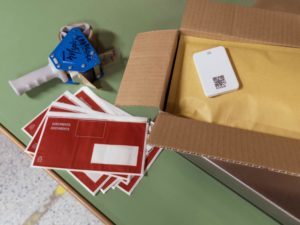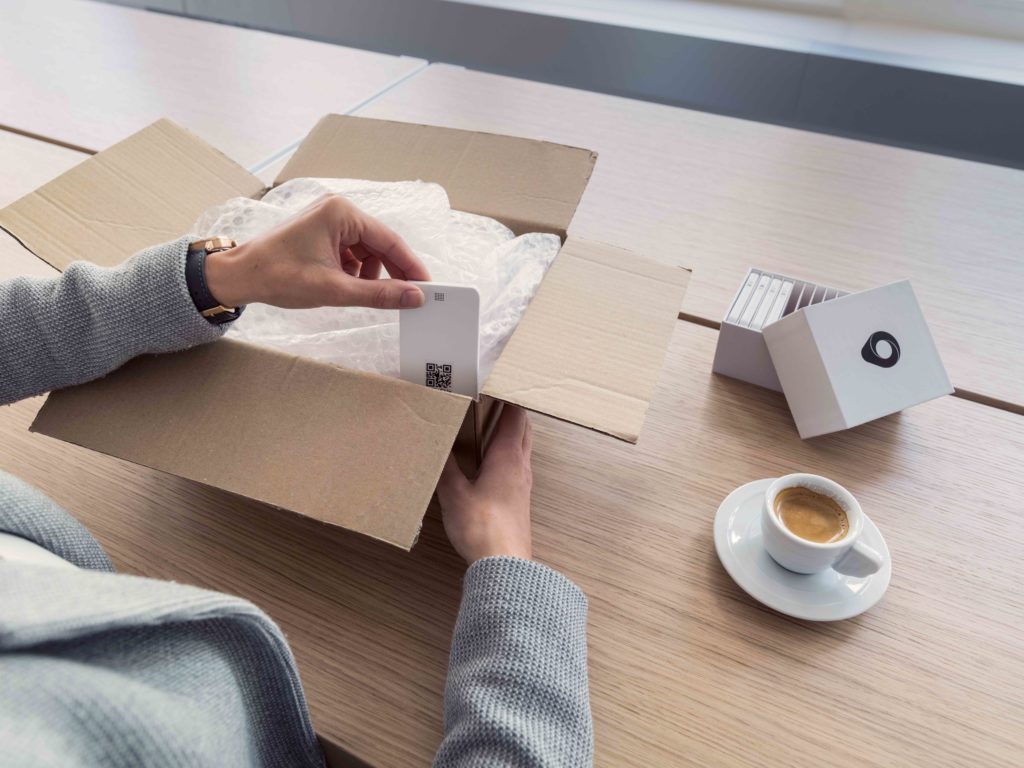Bertrand Späth, co-founder and head of sales and business development, Kizy Tracking SA, Switzerland, will give a presentation entitled At the touch of a button: real-time tracking worldwide, at the forthcoming Parcel+Post Expo Conference.
What is your presentation about?
Global supply chains are facing large inefficiencies due to a lack of valuable information about their goods on the move. Real-time tracking solutions close this information gap by gathering position data based on globally available mobile networks and local wi-fi data. They provide end-to-end supply chain visibility in real time worldwide, thus enabling significant cost reductions and massive customer service improvements. The Kizy B2B global tracking system fulfills the information needs of the logistics and supply chain industry. With no requirements for infrastructure, and autonomy of up to one year before charging is needed, Kizy makes advanced monitoring functionalities affordable for large-scale deployments.
What sort of information is lost in a supply chain, and how do real-time tracking solutions solve this problem?
If no active solution is used, you don’t know what is going on between one reading point and another. So, for example, if a shipment is misrouted and doesn’t land in a place where reading infrastructure is available, you cannot see it. And if you do, you will only know when it arrives there but not what’s happening in transit. For example, if somebody tries to open your shipment, an RFID tag or a barcode won’t notify you.
Real-time tracking allows users to see wherever the shipment is and what the situation is so they can proactively prevent issues.
There are many use cases: for parcels, you can compare data with expected delivery paths. You see that while your shipment is supposed to go through Ukraine, it actually goes through Argentina. In terms of performance management, you can track how much time shipments need to get from one point to another. This is very important, allowing users to check the quality of third-party partners.
Also, active tracking allows you to see tendencies in terms of fulfillment of global parcel deliveries. You could, for example, detect issues in distribution centers and dynamically reroute shipments based on occupancy of distribution centers.

How does end-to-end visibility in real time contribute to cost reductions?
Consider this: more than 30 million containers are shipped internationally every year. Every day of delay costs about 2% of the value of the container in terms of lost opportunity, the effort to search for it, penalty fees, and use of resources. 53% of containers arrive late with an average delay of four days. Assuming a mean value of US$50,000 per container, the cost can be expressed in billions every year. For example, a major petrochemical company pays more than US$80,000 per year in penalty fees for late deliveries – just in the USA.
Real-time visibility allows you to proactively tackle issues. If a container is misrouted, you can take corrective measures even before the customer sees it, and therefore save money.
Is global tracking cost-prohibitive? How much would it cost to implement in an existing company?
Global tracking is getting cheaper thanks to the decreasing costs of global technologies, such as cell phone networks. Roaming fees, which were preventing these kinds of solutions a few years ago, almost don’t exist anymore.
Today, a company can reduce the total cost of ownership of active tracking solutions down to US$20 per shipment, maybe even below US$10 for closed-loop shipments.
If you want your own active tracking solution, all you need is to get the trackers. The effort is minimal; with just a few hundred dollars you will have your own tracking solution. Compare this with costs for RFID or Bluetooth: you need at minimum several tens of thousands of dollars just to start to test out your market.
With Kizy, you need to invest in hardware but you do not need to invest in any kind of infrastructure. It just works. For example, with Bluetooth, you need to equip your space with Bluetooth sensors. With Kizy, you just need a tracker to run your tests and you will get immediate results. The Kizy advantage: it allows users to set up a tracking solution very quickly and independently of any transportation partner or distribution center, or the environment you are working in. It works where other systems don’t work. You can quickly test your markets with this technology. If you have customers with a need to track, they don’t need to build up the whole active tracking infrastructure – you can basically start immediately.
In terms of costs and efficiencies, one example is Asendia. Asendia faced losing a customer because the customer was complaining that shipments were always late. Thanks to Kizy, Asendia could prove that the problem was not in the arrival of the shipments but that they were taken over too late. As Asendia was able to show that the issue was not on Asendia’s side but on the customer’s side, it was able to retain the customer.

See Bertrand Späth, co-founder and head of sales and business development at Kizy Tracking, at 10am on Tuesday, October 1 in Room 3. The full conference schedule can be found here.


